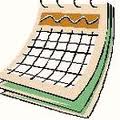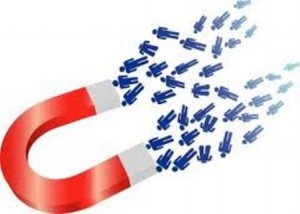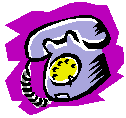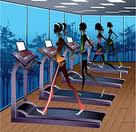Where Every Pharmacist Wants to Work
 Wouldn’t it be nice if instead of having to wait for applications when you post a new pharmacist position, that you would already have a network of qualified pharmacists you could call? Could you imagine all the time you would save from having to sift through those piles of resumes and applications?
Wouldn’t it be nice if instead of having to wait for applications when you post a new pharmacist position, that you would already have a network of qualified pharmacists you could call? Could you imagine all the time you would save from having to sift through those piles of resumes and applications?
Be known as the place pharmacists want to work.
When I share new pharmacist job opening with pharmacists, they often ask me where it’s at. And sometimes they’ll tell me right away “I wouldn’t want to work there because they (the pharmacy director) tell you you’d be working one kind of schedule when you interview, and then they make you work other schedules once you’re hired. It’s like bait and switch.” Or the pharmacist I talk to would tell me “I like everything about the job, but not the schedule.”
 The biggest complaint pharmacists share with me about why they leave jobs is because of the schedule. The most common issue is being tired of a variable schedule, because it makes it hard for a pharmacist to plan their personal life. It’s harder to plan taking fun classes, organize rides for kids related to school activities, and coordinate time to hang out with a significant other more. Not knowing their schedule far in advance is another issue.
The biggest complaint pharmacists share with me about why they leave jobs is because of the schedule. The most common issue is being tired of a variable schedule, because it makes it hard for a pharmacist to plan their personal life. It’s harder to plan taking fun classes, organize rides for kids related to school activities, and coordinate time to hang out with a significant other more. Not knowing their schedule far in advance is another issue.
Tip #1: If you can make your pharmacists’ schedules more consistent and give them access as much in advance as possible, you will be known as an employer who has desirable shifts for their pharmacists. You will attract good pharmacists who are good at what they do, but have trouble balancing their life with the rotating & variable shifts in their current job.
Action step to implement: Think about what you can do about the schedule. One hospital pharmacy director saw his retention rates go up significantly when he added a 7 on/7 off staff pharmacist evening shift. The 7 on/7 off evening shift covers the less popular shifts of evening shift & weekend shifts. Plus, his pharmacists love having 7 on/7 off schedule without having to work nights. Contemplate this idea to see if it would help with pharmacist satisfaction at your pharmacy.
Tip #2: Be known as the #1 place pharmacists work at if they want professional growth.
 Many pharmacists love the opportunity to grow professionally. This doesn’t mean just clinically, but to develop as a person. Find out what your pharmacists’ strengths are, and foster growth in that area. It is a very individualized plan—it could be related to pharmacy management, clinical projects, coming up with ideas to improve workflow, patient care, or reducing time it takes to dispense medication, etc. Allow them the autonomy of taking on one project at a time. They could be small projects but important ones. They could also be part of a team in your pharmacy that brainstorms & implements that project together.
Many pharmacists love the opportunity to grow professionally. This doesn’t mean just clinically, but to develop as a person. Find out what your pharmacists’ strengths are, and foster growth in that area. It is a very individualized plan—it could be related to pharmacy management, clinical projects, coming up with ideas to improve workflow, patient care, or reducing time it takes to dispense medication, etc. Allow them the autonomy of taking on one project at a time. They could be small projects but important ones. They could also be part of a team in your pharmacy that brainstorms & implements that project together.
If you take the time to do this with each of your pharmacists, chances are that you will have pharmacists who stay with you year after year. You develop a relationship with your team and they feel you really care about them. Pharmacists who feel cared for will less likely leave their jobs, even if what seems like a better opportunity comes up.
Even while doing everything to be the best place to work, you may sometimes find yourself having an important job opening you want filled with the right pharmacist as soon as possible. Fortunately, you are in a better position than a pharmacy that doesn’t have as strong reputation than you. But you may still not have enough connections with the most experienced pharmacists to fill your opening. Don’t worry, because there are experienced and qualified pharmacists you can open yourself up to. Find out your options.
Action step to implement to become the place where every pharmacist wants to work: In your next staff meeting, share what your vision is about them growing professionally. Hand out a worksheet for them to fill out that helps them identify and acknowledge their strengths & what they are interested in doing more of professionally. Also during your staff meeting, ask your staff think could be done better about your pharmacy. Pick out the top 3 initiatives to work on in the next quarter.
Never “Call Your Ex” When Hiring a Pharmacist
 I was interviewing a candidate last month and fell in love with this person. I could see myself really enjoying working with her and thought she would be outstanding for the role she was interviewing for. I was imagining how she would fit in with our company, how we could really use her savvy marketing skills that I could tell were very authentic. She had a natural ability to make you want to listen to her even when you hadn’t talked to her for very long. What a great possibility for a potential recruiter, I thought.
I was interviewing a candidate last month and fell in love with this person. I could see myself really enjoying working with her and thought she would be outstanding for the role she was interviewing for. I was imagining how she would fit in with our company, how we could really use her savvy marketing skills that I could tell were very authentic. She had a natural ability to make you want to listen to her even when you hadn’t talked to her for very long. What a great possibility for a potential recruiter, I thought.
But something didn’t feel right. Although she was enthusiastic about marketing, she didn’t seem that enthusiastic about our company. One example was that she didn’t grasp what our company did from our website. In fact, she was totally off. She didn’t put the two and two together that we help connect pharmacists with jobs. Red flag, red flag! I started to justify it in my head that maybe our website’s unclear. But I couldn’t bring myself to settle in that justification because every interviewee who’s looked at our website has understood what we do.
Yet I was tempted to call her back.
And when I still hadn’t found the right person a few weeks after that, I thought again about calling her back.
Have you experienced something similar when you’ve been in the process of hiring a pharmacist? It’s like wanting to call your ex—you have moments when you think maybe you were wrong about breaking up with someone. Time goes by and you wonder…maybe it wasn’t really that bad after all? It’s the same when you’re in that position where you really need to hire someone, but haven’t found the right person yet. When the workload gets backed up in the pharmacy, you may be tempted to call this person you liked & question whether your judgment was right the first time. You get tempted…
 My honest assessment of her was that she would have been fantastic in the role I was looking for. But I didn’t think she had a true interest in the recruiting profession. My intuition was that if she were to work with us, this would just be a temporary in-between career move for her. And that wasn’t necessarily in alignment with our company’s needs.
My honest assessment of her was that she would have been fantastic in the role I was looking for. But I didn’t think she had a true interest in the recruiting profession. My intuition was that if she were to work with us, this would just be a temporary in-between career move for her. And that wasn’t necessarily in alignment with our company’s needs.
It took a bold move to not move forward with considering her, rather than to open our company to misalignment. To tell you the truth, I called her back and looked for how she may explain why she didn’t grasp the first time what our company. But the conversation confirmed my initial intuition. What bold stance will you choose to save you trouble from hiring down the road?
Put the phone down, and keep looking for the right candidate. If you still aren’t getting the right candidates, maybe it’s a good time to develop a relationship with a highly-experienced recruiter who understands your specific needs and can attract and pre-screen candidates for you, so you can spend more time doing what else is important on your plate. If you “call your ex,” you’ll regret it–and you’ll only waste your time and theirs in the long run.
Next time you are tempted, just remember—do you really want to be calling your ex?
5 Steps to Being a Pharmacist Candidate Magnet
 Now that the pharmacy job market is an employer’s market, many of you pharmacy directors (and pharmacy residency program directors) making hiring decisions are flooded with pharmacist resumes to choose from. Now the challenge becomes how to find the right fit in the least time-consuming way, so you can focus on pharmacy operations.
Now that the pharmacy job market is an employer’s market, many of you pharmacy directors (and pharmacy residency program directors) making hiring decisions are flooded with pharmacist resumes to choose from. Now the challenge becomes how to find the right fit in the least time-consuming way, so you can focus on pharmacy operations.
One of the best strategies to saving time in your hiring process is being a candidate magnet. That way you attract the ones that are the right fit, and repel the ones who aren’t. The chances of your new pharmacist hire staying will be higher. Then you won’t have to hire as much.
Let me share with you a few secrets of being a candidate magnet. If you are using these strategies, you will have better luck with identifying the right fit and save yourself headaches of a bad hire.
Here are the first three steps of the 5-step process I teach about being a candidate magnet:
ST EP 1: Clarify what your pharmacy/hospital/organization stands for, what’s important to the role, how the pharmacist would fit into the big picture, and what makes your pharmacy special (Read ideas about figuring this out below).
EP 1: Clarify what your pharmacy/hospital/organization stands for, what’s important to the role, how the pharmacist would fit into the big picture, and what makes your pharmacy special (Read ideas about figuring this out below).
STEP 2: Write an attractive job description and convey what makes you different.
STEP 3: Get the word out (You’ll be learning some of my tips in a future article about this). The first step is one that is glossed over when hiring. Most pharmacy directors who are involved with justifying the position from a financial perspective to get a position approved by administration will spend time on how the pharmacist would fit into the big picture and on the roles and responsibilities. But take time to consider a few important questions (see sample answers below):
1. What are the values and beliefs of my pharmacy?
- Do what it takes – go above & beyond
- Open your heart to others
- Pitch in
- Have fun in your work
- Be creative in decision-making
2. What are the values and beliefs of my hospital/organization?
- Connection and contribution
3. What makes my pharmacy special?
- Every pharmacist has the opportunity to do clinical work
- Everyone is valued for their ideas and has the opportunity to use their talents
4. What is important to this role I’m hiring for? (Include what a typical workday be like, skills they would come with and those that they’d be capable of being trained on, how the pharmacist would interact with other patients and co-workers, and the non-negotiable values) Key Tip: Include the characteristics you want the pharmacist to have. The answers to the first few questions will likely be a part of this answer. Example: Conscientious, strong ethics, heart-centered, going above and beyond, creativity Use the answers to these questions not only in writing your magnetizing job description, but also through your screening process. It is the foundation of attracting the best fit.
Want to learn the rest of the 5 steps, plus learn how to find candidates when you needed them yesterday and weed out the wrong fit quickly?
Register for instant access to the FREE teleseminar “Insider Secrets the Best Recruiters Use to Attract the Right Candidates”
You’ll Learn:
- How to Be a Candidate Magnet – learn how to attract the right candidate, not pursue them
- Secrets to finding candidates when you needed them yesterday
- Buyer Beware! Why the perfect resume may not be the perfect candidate
- Simple steps to weed out the wrong ones quickly & effectively
- How to identify “red flag” candidates
- 3 reasons why most job descriptions actually turn off your best candidates, rather than attract them
Enter your name and email above to get instant access to this free teleseminar!
The New Year Phenomenon
 My husband likes to work out at the gym. He went the other day and couldn’t believe how packed it was. The New Year’s Resolution phenomenon in full swing. Ben (my husband) said to me, “Give it another month, and the gym will be back to normal”. I guess he doesn’t have much faith in all the people there excited about their new founded habit to get their butts out the door and to the gym a month from now.
My husband likes to work out at the gym. He went the other day and couldn’t believe how packed it was. The New Year’s Resolution phenomenon in full swing. Ben (my husband) said to me, “Give it another month, and the gym will be back to normal”. I guess he doesn’t have much faith in all the people there excited about their new founded habit to get their butts out the door and to the gym a month from now.
As we start the New Year, many of us take this step into a new year as a symbolic opportunity to step into doing things differently. The key is whether we can sustain that new commitment to ourselves to make a lasting difference on the way we choose to live. This applies to any intention you set for yourself, like getting yourself a new fit body, a new job, or a new habit (like never being late again).
The first step is recognizing what didn’t serve you.
 It might have been bubbling up inside you…a knowing that something didn’t work for you. For example, in the past, when you searched for jobs, did you mostly search online (isn’t that what everyone does these days to find a job)? What about blasting out your resume to many places online and not hear back from the ones you really wanted to hear from? Did you use the same resume for every application?
It might have been bubbling up inside you…a knowing that something didn’t work for you. For example, in the past, when you searched for jobs, did you mostly search online (isn’t that what everyone does these days to find a job)? What about blasting out your resume to many places online and not hear back from the ones you really wanted to hear from? Did you use the same resume for every application?
Maybe it didn’t work that well, or maybe it worked ok, but boy was it a lot of work. You had a feeling that surely there must be a different less time consuming way.
All those people at the gym recognized the first step. But why isn’t it always lasting? How can it be different this year with your resolution?
The second step is deciding what you want to commit to. Commit to it, and then never look back.
Don’t bring any misery of regret, beating yourself up, or memory of your previous habit (or way of doing things) that didn’t serve you before along with you as you create your new habit or new mindset.
When looking for jobs, decide that you will only apply for a few jobs that you are most interested in, and put most of your efforts there. This allows you to take the time to understand the role, get to know the pharmacy or hospital you are most interested in (their vision, leadership, work environment, etc), and highlight yourself in a way that makes them want to chase you. It also gives you an advantage because knowing this in detail will help you make an impression that other “spray & pray” candidates won’t have a chance in making. Be committed to doing things differently with your job search & don’t look back.
 This year, I’m taking my own medicine. In reflecting about what frustrated me about our company in 2011, this is what came to me…
This year, I’m taking my own medicine. In reflecting about what frustrated me about our company in 2011, this is what came to me…
What didn’t serve us: not being able to serve the pharmacists in our community the way we wanted. Many pharmacists contacting us for our help, and not enough people/resources to serve them in an effective way that solved their problems/challenges in a timely manner.
What we decide to commit to & never look back from: Pharmacist Job Connection (which was trying to be too many things to too many pharmacists) is getting a facelift.
Pharmacist Job Connection is going to be about helping pharmacists learn how to stand out in their job search to beat their competition for interviews & offers.
RPh Temp Service (our temp division specializing in Indian Health Service travel assignments) will continue to be the most requested temp agency serving Native American pharmacies (IHS/tribal).
Now here’s the exciting news…
Hospital Pharmacist Job Connection is a fresh face in our family…it will exclusively help experienced hospital pharmacists get introduced directly to hiring decision-makers and access jobs before they’re advertised.
If you are a hospital experienced pharmacist (ie, clinical coordinator, clinical pharmacy specialist, informatics pharmacist, PGY2 residency-trained, or pharmacy director/manager), click here to be kept in the loop about how to cut down on your time consuming job-seeking process.
If you are a hospital pharmacy director/hiring manager tired of sifting through hundreds of resumes & getting backed up with your workload, be the first to hear about 1) secrets on how to hire “The One”, or 2) options to hand off searching, finding, & hiring “The One” to experts.
Hiring Pharmacists: Is Experienced or Inexperienced Better?
Should you hire an inexperienced or experienced pharmacist?
Sounds like an obvious question, doesn’t it?
The answer?
It’s simple but not always obvious.
Some pharmacy hiring managers love to hire inexperienced pharmacists with the right attitude and train them to their pharmacy/company’s ways of doing things & groom them. Others prefer more experienced pharmacists, so management can save time with training. *Note: in this job market, the definition of inexperienced that I’m referring to is a few years of experience or less.
Here are the 3 most common mistakes of hiring based on experience or inexperience. You may identify with one of them and gain a few insights, plus save yourself headaches when you hire:
Mistake #1: Hiring inexperienced people with the right attitude & fit, but not having the time/energy to set them up to meet or exceed your expectations. You tell yo urself you will create a comprehensive training program, but you really don’t have time for this kind of thing. It gets put on the backburner because of all the other things you HAVE to do.
urself you will create a comprehensive training program, but you really don’t have time for this kind of thing. It gets put on the backburner because of all the other things you HAVE to do.
Before you know it, your new hire is either frustrated and not performing to the way you’d like, or you talk yourself into not needing to create a comprehensive training program. You tell yourself that the first few week or two of training should’ve been enough.
Even more frustrating, your new hire decides to leave after a short period of time, even though the pharmacist seemed like he/she wanted to stay a long time with you.

Pharmacist Slacking Off
Mistake #2: Hiring primarily based on experience, and getting excited about someone’s achievements but not being careful with the rest of your screening process (including not following your intuition). You tell yourself that you don’t have to worry as much about assessing their fit, because this person has worked many years at another pharmacy successfully. Surely they’ll catch on even though they start out performing below your expectation. You let your guard down and skip over parts of your typical screening process.
Caution (Hiring Alert!): Working many years at another pharmacy and doing well there doesn’t automatically translate into doing well in your pharmacy’s culture and expectations. Your potential hire’s previous goals aligned with that employers’, but does his/her current goal align with your pharmacy’s?
Mistake #3: Hiring and allowing someone to continue at your organization when you realize they consume too much of your time (not in a beneficial way), or may be toxic to your staff. You think it will be too much trouble to go out there & look for a new hire again. You stay in this bad marriage because you committed, right?* Now, in most cases, I’m all about commitment in a marriage & staying until things get worked out, but having someone on your staff is not completely like a marriage (although there are similarities).
You can have patience & compassion to an extent about your new hire, but if it doesn’t work out, the decision to let him/her go will prevent that person’s ability to affect other staff members’ work. In fact, hanging on to someone who’s not right for your pharmacy can prevent others from performing their best.You can have a different relationship with your hire who didn’t work out, ie: an acquaintance, but you don’t need to have them consume your time & emotional energy as a staff member whom your pharmacy’s paying for.
What is the solution to these potential headaches?
If you hire someone inexperienced, take the time to assess how much time and energy it will take of yours and your staffs’ to get your new hire up to speed. Beyond that, how much time and resources will it take for them to excel? When you hire someone inexperienced, hiring someone with the right attitude and “fit” becomes even more important. If you end up finding out after they start & it doesn’t look like it’s going to work out, you’ve just spent a tremendous amount of your energy getting them on board. Take care in assessing the “fit” and attitude of your inexperienced hire.
If you hire someone experienced, make sure you have someone who has the attitude and “fit” of your pharmacy organization, not just on a short-term basis but a long-term basis.
These common hiring mistakes above can not only happen when hiring a pharmacist for a full-time position, but especially when hiring someone to fulfill a temporary need. Most of the time when you are pressed for a last-minute need, you really don’t have time to ie, train someone with little experience, or deal with headaches of someone who is not the right fit.
This is where having a relationship with a recruiting company that specializes in the area of pharmacists you’re looking for and who knows you well can really give you value that no one else can. There is nothing better to be said for fit, experience, & the right attitude. Sometimes not having the right fit nailed down can really cost you.
When you have a secret weapon who knows you, your pharmacy’s vision, and more about your team so they are sizing up candidates based on much more than experience, the result of finding the right “fit” can save you headaches, time, and beaucoup bucks.
Add that with getting access to the most experienced pharmacists in the area of specialty your pharmacy’s looking to hire, and you have an edge to save yourself a lot of hassle & long-term hiring costs that other pharmacy hiring managers don’t have.
Frustrations Communicating with Your Pharmacy Staff
 Co-mmuni-cat-ion. Com-munic-at-ion. I started having a good look at my own communication issues recently when I was feeling frustrated with things falling through the cracks in my pharmacist recruiting business. Some things I envisioned being done a certain way ended up being done a different way. Recently, an email I sent to a team member about a request was interpreted in a different way than I intended & it got us both extremely frustrated. My communication challenges were driving me nuts. There’s nothing I hate more than things impacting the level of service that pharmacists need attention to with their job search.
Co-mmuni-cat-ion. Com-munic-at-ion. I started having a good look at my own communication issues recently when I was feeling frustrated with things falling through the cracks in my pharmacist recruiting business. Some things I envisioned being done a certain way ended up being done a different way. Recently, an email I sent to a team member about a request was interpreted in a different way than I intended & it got us both extremely frustrated. My communication challenges were driving me nuts. There’s nothing I hate more than things impacting the level of service that pharmacists need attention to with their job search.
I was determined to figure out how to solve the challenges I was having. Looking into it, I noticed that sometimes, things I clearly stated one way were being interpreted in another. Then there were times when things I unclearly said were unclearly getting interpreted (imagine that!). If I got lucky, sometimes people read my mind just fine.
I tried to figure out how I could solve the problem, and while doing so, I stayed up all night reading about communication one night. Here are some straight no BS tips I learned (and from my personal experiences) that you can use in your pharmacy/department:
1. Don’t be hard on yourself or on the other person when a communication breakdown happens and you’re frustrated. Realize that communication issues happen when the steps that contribute to communication are skipped. Also, people interpret you from their own “world”, and even if you communicate clearly and they seem to understand exactly as you said, there is still a chance for miscommunication to happen. Take a step back and evaluate what you may have contributed to the issue.
2. Communication = someone expressing themselves + someone interpreting that expression. Happiness for communicator= someone communicating + being understood the way they want. Happiness for recipient= Receiving what was being said + having the info with as little judgment as possible +a way to respond and express their understanding.
3.  No BS lessons/tips to make life easier: Read more
No BS lessons/tips to make life easier: Read more
Ready to Take Action & Turn Around Your Demotivated Pharmacy Staff?
 Last month, you learned the first 3 steps to improve productivity and increase your pharmacy staff’s motivation by taking a proactive approach to the situation. Now, read on for the second stage of the process, in which you prepare and present a plan to motivate your staff to the next level.
Last month, you learned the first 3 steps to improve productivity and increase your pharmacy staff’s motivation by taking a proactive approach to the situation. Now, read on for the second stage of the process, in which you prepare and present a plan to motivate your staff to the next level.
Step 4: Give each of your staff the opportunity of completing special projects within the pharmacy and give them creative freedom to introduce it into pharmacy. These can be patient-service related, clinical, or workflow-related. Allow your staff to have ways in which they may provide ongoing suggestions (ie, a suggestion box). Take time to discuss as a team the top ones to work on next, with the input of your vision. Give your staff the autonomy to be in charge of their project. Be amazed at your staff taking ownership and having pride in what they create. Give them a sense of purpose that motivates them to do their best every day.
Step 5: Make the most of your pharmacy technicians–give your techs ownership of an area that supports you. Ideas include taking P&T meeting minutes, organizing drug files (with you doing the aspects that require clinical knowledge), and answering all phone calls unless they escalate to requiring a pharmacist. For example, in many pharmacies, when a patient asks for a pharmacist, the phone immediately gets handed to a pharmacist. Instead, train your pharmacy support staff to ask what the person is calling about, so that if they can answer the question for them, they can do so. This helps you as the pharmacist or pharmacy manager make the best use of your time. You may train your support staff to say “so that I can give him/her [pharmacist] the heads up on what to help you with, would you let me know in a nutshell what you would like help with?”
Step 6: Inspect what you expect & acknowledge accomplishments. It’s cliché, but it rings true. Consistency of performance is impossible to maintain long-term when you don’t take the time to “inspect what you expect” & continue to inspire your staff.
Taking an active approach to turn around a demotivated staff reaps great rewards in productivity, employee satisfaction, and team cohesiveness. After implementing your unique plan, watch as your pharmacy staff grows on an individual and team level. As time goes on, be sure to not let the excitement of these new responsibilities wear off. Continue to encourage your pharmacists and techs to contribute in new, creative ways.
Motivating Your Pharmacy Staff Who Aren’t Performing to Their Potential
 Are you tired of figuring out a way to motivate your pharmacy staff who are underperforming, or who are visibly demotivated?
Are you tired of figuring out a way to motivate your pharmacy staff who are underperforming, or who are visibly demotivated?
What if you didn’t have to pull your hair out anymore, and could easily inspire your staff to exceed their potential?
You can improve productivity and increase your pharmacy staff’s motivation by taking a proactive approach to the situation. Create a more dynamic team with this two-tiered plan. First, set the tone for positive change and to decrease obstacles. Second, bring a plan to motivate your staff to the next level.
Here are some ideas you can implement now to achieve this:
Step 1: Share your vision for the pharmacy openly and frequently. Share your 1-mo, quaterly, annual, or 5-yr vision at staff meetings. Ask your staff what role they’d have an interest in playing with helping you reach your vision. In sharing your vision, share your specific goals as well. Instead of general goals such as “improve patient care” or “decrease wait time” give specific goals that are measurable, such as “decrease wait time by 20 min”.
Step 2: Provide clear channels of communication. Include regular time when your staff gets 1-on-1 time with you aside from performance reviews or team meetings. This time is best used to proactively encourage their growth as a pharmacist/tech, discuss challenges, and listen to the solutions they have to offer.
Clear communication when policy changes are made. When policy change are made, include your whole staff on those changes. This includes contract pharmacists who may not always attend your staff meetings. Provide them with an agenda that includes outcomes of those staff meetings and ask them to sign the agenda to acknowledge reading it.
Step 3: Set the stage for a more defined work flow by choosing structure over “wherever you’re needed”. Rather than letting your staff pharmacists & technicians choose where among the workflow to help out, have a structured workflow that lays out who is to do what when. Delegate responsibility that includes checklists (this can apply well to technicians). Some pharmacies allow pharmacists to float between screening & verifying/counseling without a set schedule.
The drawback to this is that some pharmacists may have a preference for one type of responsibility over another and engage primarily in that responsibility. This can create resentment among your staff, because those who may not be as assertive may end up feeling “stuck” doing responsibilities that the other staff doesn’t like to do.
Of course, instill the culture in your staff to help each other out when they’re backed up, but give your staff clear expectations of their roles.
Next month, we’ll introduce a plan for inspiring your pharmacists to want to perform at the next level.
How to Train for Retention so Pharmacists Don’t Leave
The potential government shut down last week made many people affected sweat. With steep federal budget cuts, the issue of having money to hire becomes one to be concerned about. Even if you are not affected by federal funding, budgets is the name of the game in this economy. Having to hire someone new can be costly, so retention is always the first place to look for a solution. Retaining good pharmacists starts from the very beginning-hiring and training.
One of the most common phrases I hear from pharmacy directors/managers is “I don’t want to spend a long time training a new employee.” As a result, training becomes something many pharmacy managers fly through quickly to get a new pharmacist up to speed. Yet it is the most crucial element to your new employee’s long-term success and ultimately the retention of your new hire.
Here are a few tips to implement when you train someone new:
- Set expectations – between both you and your new hire. This means not only you setting expectations for them, but them expressing their expectations and how they prefer to be managed. Determine together what the definition of success in their role would look like.
- Discuss the pharmacy’s values, vision, and mission. This is a step many pharmacy directors skip. But it is an important step for key reasons. One of the main reasons why an employer feels compelled to stay at a job is if values, vision, and mission are in alignment. Things may not be perfect, but an employee is more likely to put up with things they are dissatisfied with if they feel they are aligned with your pharmacy’s values & are empowered by your vision/mission.
 Conduct a personality assessment such as the Insights Model, so you recognize not only how they may tend to relate with others, but also their natural strengths. For example, an introvert may not openly share their successes with you, but they may be just as outstanding as an extrovert counterpart. Insights into how your pharmacy staff thinks, acts, and works can give you an edge to managing them smoothly.
Conduct a personality assessment such as the Insights Model, so you recognize not only how they may tend to relate with others, but also their natural strengths. For example, an introvert may not openly share their successes with you, but they may be just as outstanding as an extrovert counterpart. Insights into how your pharmacy staff thinks, acts, and works can give you an edge to managing them smoothly.- Find a way to communicate regularly with your new hire. Set expectations for how they can maintain channels of communication, including as a team (ie, staff meetings) and individually. Include when, how frequently, what can be brought up. For example, you may set the stage early on that when someone brings a problem, they will always come with three potential solutions. This way you don’t get constant complainers.

In an upcoming blog article, you will learn some of the best questions to ask a new hire to see how they are doing during the training period….and how to use that valuable information to retain your pharmacists.
If you have temporary coverage needs between finding out when someone is leaving and training a new hire, explore your options for IHS/tribal-experienced pharmacists to cover in the interim. Don’t waste your money on inconsistent levels of pharmacists who take more than necessary effort to train and manage.